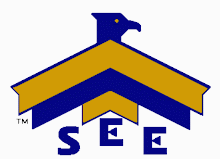A great deal has been written about the importance of non-verbal elements in the totality of the communication picture. Ranging between sixty and eighty percent of either message content or message richness, all experts agree that body language, facial expressions and tones account for a big part of the message received.
In addressing tone, a good communicator must understand their environment and situation. During corrective coaching, a leader cannot be overly upbeat or friendly in tone. When having relationship based dialog or during tone setting, you cannot come across in a flat, monotone or disinterested tone. Tone, in communication is an interesting dynamic that is driven by attitude. When the attitude is strong and healthy, a person is more likely to correctly adapt to different tone situations. When attitude is poor, tone adaptations are less likely to occur or, at the least, occur in a well done manner.
The great mirror of tone, and attitude for that matter, is the human face. Very few leaders are truly in tune with how their face looks during communication. Many are unaware of the wrinkled brow, scowl or stares of indifference that they cast on a regular basis. Under stress and with a poor or sinking attitude, managing facial expressions becomes a remote after-thought.
Effective leaders and great communicators make a special point of being aware of and managing their facial expressions. They understand what others see on their face and they actively work to create facial expressions that add to, and not distract from the message. This facial management is an important part of the non-verbal communication package and very important in controlling the tone of any dialog.
A couple of other non-verbal messages to be aware of include crossed arms, hands in pockets and single finger pointing. The crossed arm position, especially prevalent in sitting positions and during colder temperatures, shows a closed and uninterested position. For men more than women, the hands in pants pocket message is very common. When those hands slide in the front pockets it demonstrates a nervousness or disinterested position. Many people show this when standing for introductions or in other uncomfortable situations.
First recognized by the airline industry, the single finger point is a very aggressive piece of body language. Many people report that they feel assaulted or at the least, uncomfortable when others point. And as we all remember from our parents, it is rude. An interesting side note on single finger pointing is that many studies conclude that the aggressive nature of this piece of body language is not limited to pointing at a person but rather is equally aggressive when pointing towards other objects.
We can’t put them in our pockets, cross them, put them around our mouth or point them, so what do we do with our hands and arms. Effective leaders have found great value to engaging their hands and arms as message accentuation tools. Quite simply this means to use your hand and arms to assist in adding emphasis and enthusiasm to the message package. A little hand and arm movement shows you are engaged and believe your message as well.
Subscribe to:
Post Comments (Atom)






No comments:
Post a Comment